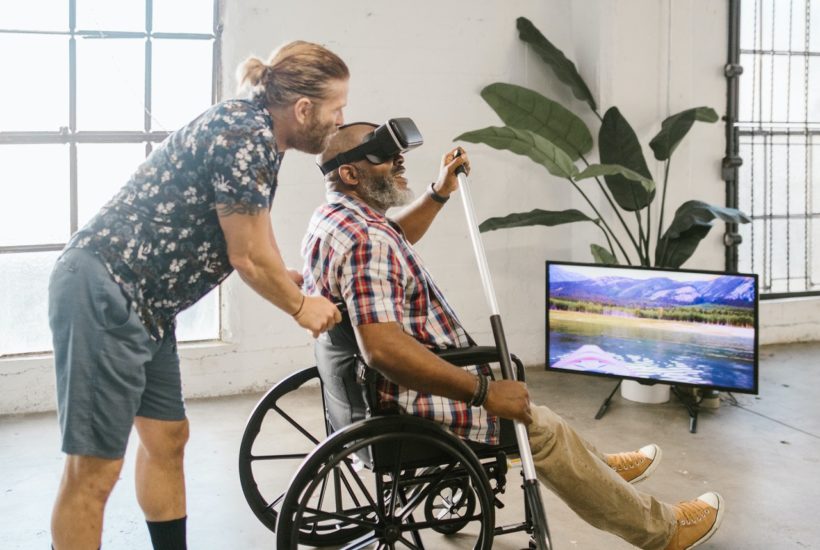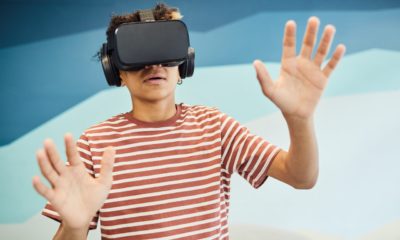Business
XRApplied is Bringing Extended Reality (XR) to our Daily Lives
There’s no question that virtual, augmented, and mixed reality—known collectively as XR—will play a major role in our everyday lives. The rate of hardware adoption is up, as are the number of incredibly useful applications, as evidenced by the products young companies like XRApplied are developing. Here we take a quick look at some of the fields that are about to be revolutionized by XR tech.

Virtual Reality is rapidly gaining a lot of ground. As hardware continues to improve, it is quickly getting to the point of being democratized in several fields—particularly with Facebook’s aggressively subsidized Oculus strategy. From culture and education to sports and entertainment, Extended Reality (XR) is literally starting to find a place in every part of our lives.
However, this transition to being an everyday tool (and toy) would not be possible without the hardworking companies building out the underlying software to run on the platforms. After all, a headset isn’t much use on its own. Here we find heroes like XRApplied (CSE: XRA), a fast-growing company that recently went public on the Canadian Securities Exchange.
Let’s take a look at some of the areas of our daily lives this young company is starting to innovate in.
Extended Reality Created Engaging Educational Content
If you’re a parent, you have probably been confronted at least once with your child’s refusal to go to school because he or she finds the environment tedious and austere. However, with the educational applications of extended reality, this child’s apprehension towards school is avoided.
With the help of XR, education is becoming more and more playful, allowing children to learn while being entertained.
This has the double effect of not only increasing the amount of attention given to the content but also the time spent on the content as the educational environment created by extended reality makes your children more attentive and focused.
For example, with XRApplied’s educational AR Balloon Pop App, augmented reality (AR) is used to better stimulate your children’s senses, making it easier for them to remember the content being taught in the gamified lessons. By using multi-sensory AR, a child can more easily pick up rudimentary skills like counting and reading, and they also have a better chance to retain them than if they did things the old way with pens and paper.
VR in Medical Treatment
The use of virtual reality in the field of medicine is a particularly exciting area of development for XRApplied. The treatment of depression and anxiety, for example, is easier with extended reality, and the company believes we’re only just scratching the surface of what’s possible using the tech.
Another exciting application the company envisions is helping to hospitalize people without feeling like they are in the hospital. VR could redefine any space within the hospital, improving patient comfort and wellbeing for the duration of their stay.
Extended Security with Extended Reality
The use of virtual reality in the military is already a big deal—Microsoft has already signed a multi-billion dollar contract with the US defense force. But it is also offering new possibilities in security and defense beyond the military.
Here, many applications will likely be derived from existing military uses—the military has long been a leading adopter of new technology, so no surprises there.
Examples include reconfiguring existing tech, like that of a system that uses special sensors to detect a soldier’s medical problems on the battlefield and display them in real-time. Here XRApplied can, for example, take this and repurpose it to be used in sporting events to assess player injuries or even rugby player concussions in real-time.
Extended Reality in the Enterprise
When it comes to bread and butter applications for VR and AR, enterprise use cases are where it’s at for XRApplied. Recruitment, for example, is one area where extended reality is poised to revolutionize the way things are done.
Take job interviews, for example. Here VR can be used to attract candidates during recruitment campaigns in much the same way as the tech can be used in other marketing campaigns.
But it can also be used to test candidates—arguably a more important application. For example, a mistake about the real profile of a candidate could be detrimental to a company, or even the candidate themselves.
How?
Traditionally, candidates for jobs in fields with technical requirements are subjected to technical aptitude testing during interview rounds. However, this is usually done in artificial environments that don’t accurately simulate the real conditions experienced when working. So the obvious use case for VR here is to create more realistic and immersive simulations.
VR can also be used to assess the candidates’ analytical skills, their sense of reasoning, and their ability to handle stressful situations in particular. Here XRApplied can use VR to subject candidates to puzzles and problems to solve whilst immersed in stressful situations. Recruiters can then assess their reactions and whether or not they should be hired.
The Endless Possibilities of XRApplied’s Tech
This brief overview of the possible applications for XRApplied’s XR tech is only a small taste of the sectors and applications it can be used for. The next few years will, without a doubt, prove to be exciting as this hot young company continues to innovate and improve on the state of the art in VR, AR, and MR.
—
(Featured image by RODNAE Productions via Pexels)
DISCLAIMER: This article was written by a third party contributor and does not reflect the opinion of Born2Invest, its management, staff or its associates. Please review our disclaimer for more information.
This article may include forward-looking statements. These forward-looking statements generally are identified by the words “believe,” “project,” “estimate,” “become,” “plan,” “will,” and similar expressions. These forward-looking statements involve known and unknown risks as well as uncertainties, including those discussed in the following cautionary statements and elsewhere in this article and on this site. Although the Company may believe that its expectations are based on reasonable assumptions, the actual results that the Company may achieve may differ materially from any forward-looking statements, which reflect the opinions of the management of the Company only as of the date hereof. Additionally, please make sure to read these important disclosures.

-

 Cannabis2 weeks ago
Cannabis2 weeks agoTrump Signals Historic Shift: U.S. Weighs Reclassifying Cannabis from Schedule I to III
-

 Crypto1 week ago
Crypto1 week agoHyperliquid Proposes Burning $1B in HYPE to Make Supply Deflationary
-

 Crypto5 days ago
Crypto5 days agoRipple in 2025: Legal Victory, RLUSD Growth, and XRP’s Uncertain Future
-

 Crypto2 weeks ago
Crypto2 weeks agoCrypto Markets Slide as Bitcoin Breaks $90K, Year-End Pessimism Grows

























